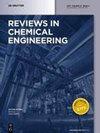处理含染料废水的可持续方法--重要综述
IF 6.6
3区 工程技术
Q1 ENGINEERING, CHEMICAL
引用次数: 0
摘要
在全球快速发展的经济中,纺织业被公认为是经济增长的重要贡献者,但也是污染最严重的工业部门之一。受染料污染的水源会对公众健康造成严重影响,包括毒性、诱变性和致癌性等。尽管人们对有效的脱色方法了解有限,但寻求一种可持续的策略来处理各种染料仍然是一项艰巨的挑战。本文详尽综述了与各种物理、化学、生物和混合工艺有关的现存文献,旨在确定这些工艺的功效。文章还阐明了这些处理方法的优缺点、成本考虑因素以及可扩展性障碍,从而有助于确定最佳策略,建立技术经济高效的工艺,以可持续的方式处理这些废水。混合配置显示出卓越的效率,并记录在案,以克服个别技术固有的局限性和制约因素。研究还发现,大多数成熟的染料去除技术都有一个共同的局限性,即会对生态系统造成二次污染(如产生污泥、有毒中间体等)。本文章由计算机程序翻译,如有差异,请以英文原文为准。
Sustainable approach for the treatment of dye-containing wastewater – a critical review
In the world’s rapidly expanding economy, textile industries are recognized as a substantial contributor to economic growth, but they are one of the most significant polluting industrial sectors. Dye-contaminated water sources can pose serious public health concerns, including toxicity, mutagenicity, and carcinogenicity among other adverse health effects. Despite a limited understanding of efficacious decolorization methodologies, the pursuit of a sustainable strategy for the treatment of a wide spectrum of dyes remains a formidable challenge. This article conducted an exhaustive review of extant literature pertaining to diverse physical, chemical, biological, and hybrid processes with the aim of ascertaining their efficacy. It also elucidates the advantages and disadvantages, cost considerations, as well as scalability impediments of the treatment methodologies, thereby facilitating the identification of optimal strategies for establishing techno-economically efficient processes in the sustainable handling of these effluents. The hybrid configuration exhibited superior efficiency and was documented to surmount the limitations and constraints inherent to individual techniques. The study also revealed that most of the proven and established dye removal techniques share a common limitation viz., the generation of secondary pollution (i.e., sludge generation, toxic intermediates, etc.) to the ecosystem.
求助全文
通过发布文献求助,成功后即可免费获取论文全文。
去求助
来源期刊

Reviews in Chemical Engineering
工程技术-工程:化工
CiteScore
12.30
自引率
0.00%
发文量
37
审稿时长
6 months
期刊介绍:
Reviews in Chemical Engineering publishes authoritative review articles on all aspects of the broad field of chemical engineering and applied chemistry. Its aim is to develop new insights and understanding and to promote interest and research activity in chemical engineering, as well as the application of new developments in these areas. The bimonthly journal publishes peer-reviewed articles by leading chemical engineers, applied scientists and mathematicians. The broad interest today in solutions through chemistry to some of the world’s most challenging problems ensures that Reviews in Chemical Engineering will play a significant role in the growth of the field as a whole.
 求助内容:
求助内容: 应助结果提醒方式:
应助结果提醒方式:


